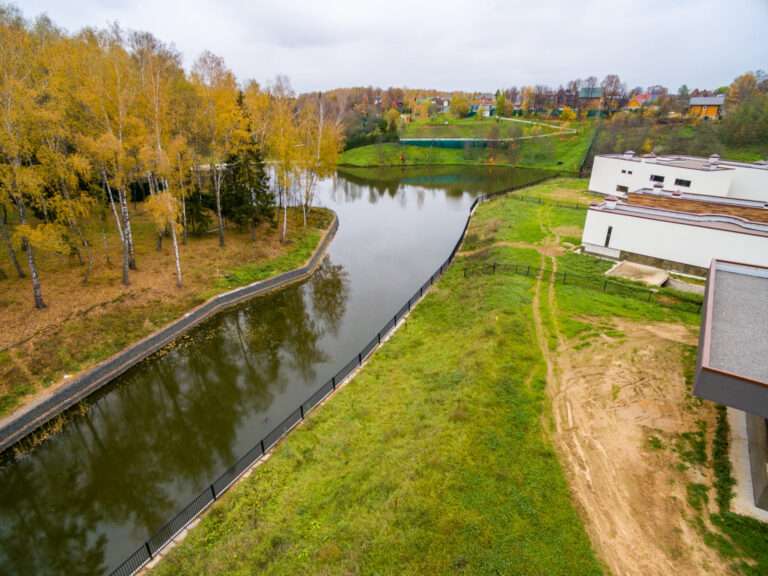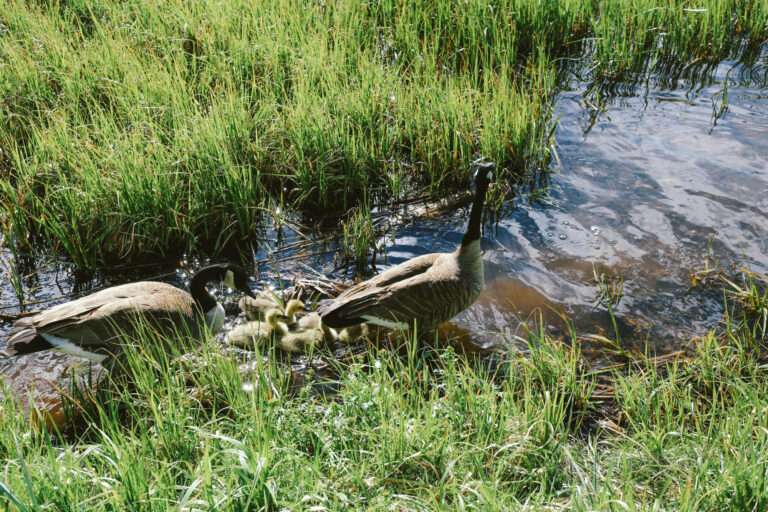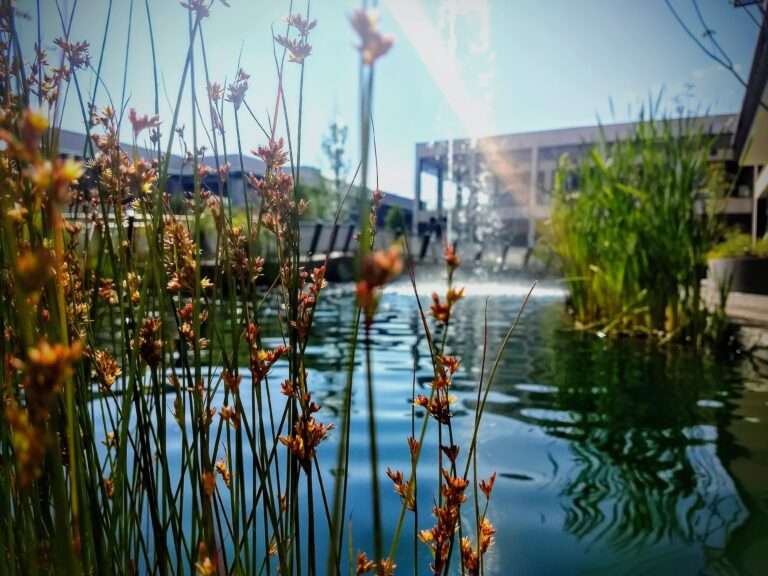Restoring Habitats on Industrial Sites: A Practical Approach to Greener, Compliant and Resilient Land Use
Industrial land doesn’t have to be lifeless. Across the UK, businesses are discovering the value of restoring habitats on disused or operational industrial sites—not just for the sake of biodiversity, but for compliance, brand reputation and long-term land resilience.
Habitat restoration transforms degraded or ecologically poor land into thriving, functional ecosystems. Whether you’re aiming to meet planning conditions, improve your corporate social responsibility, or unlock biodiversity net gain (BNG) credits, restoring habitats on industrial sites can be a powerful and practical solution.
In this blog, we explore the core benefits, best practices, and key considerations of habitat restoration for industrial sites—delivering insights you can use to create positive change on the ground.
Why Restore Habitats on Industrial Land?
1. Turn Underused Land into an Asset
Former industrial zones often include redundant corners, brownfield areas or underutilised buffer zones. These spaces can be transformed into valuable wildlife habitats, enhancing the ecological footprint of your site without affecting operations.
This kind of land uplift isn’t just good for the environment—it can also improve drainage, screen infrastructure, and increase land value through green enhancement.
2. Support Biodiversity Net Gain
Under the Environment Act, most new developments must deliver a minimum of 10% BNG. Industrial developers and site operators can meet this requirement by restoring or enhancing habitats onsite, rather than offsetting elsewhere.
Creating or restoring wildflower meadows, wetland scrapes, hedgerows or woodland edges on industrial plots directly contributes to meeting these obligations—and positions your site as an environmental asset, not a liability.
3. Enhance Reputation and Community Engagement
Restoring habitats signals that your business is committed to sustainability and community wellbeing. Whether through staff planting days, local partnerships or on-site interpretation boards, habitat restoration can foster public trust and support.
Businesses with visible green infrastructure also enjoy better stakeholder perception—particularly in sectors where environmental scrutiny is high.
Key Habitat Types for Industrial Site Restoration
1. Wildflower Meadows
Perfect for open, sunny ground. Requires low nutrient soils, often found on brownfield sites.
- Supports pollinators and invertebrates
- Low maintenance once established
- Visually attractive and instantly recognisable
2. Native Woodland Edges
Ideal for screening, cooling and noise reduction.
- Use fast-establishing species like Silver Birch and Hawthorn
- Acts as a buffer between operational zones and boundaries
- Helps with carbon storage and air quality
3. Hedgerows and Shelterbelts
Suitable along fences, access roads or around car parks.
- Encourages bird nesting and movement corridors
- Adds structure to flat or exposed landscapes
4. Wetland Features
Scrapes, ponds or ditches can be integrated into drainage systems.
- Natural flood management
- Home to amphibians and aquatic invertebrates
5. Species-Rich Grassland
Works well on spoil heaps or rough ground.
- Encourages diversity of plants and insects
- Can be grazed, mown or left unmanaged depending on the goal
Frequently Asked Questions
Do I need planning permission to restore habitats?
Generally, habitat restoration does not require planning consent unless it significantly changes land use or affects protected sites. However, it’s always wise to consult with your local planning authority or ecological advisor.
Is it expensive to restore habitats?
Costs vary depending on site condition and the habitat type, but many schemes qualify for grants or can be funded as part of your BNG commitments. Long-term maintenance is often minimal compared to traditional landscaping.
What species should I plant?
Use native UK species suited to your local soil, light and drainage conditions. Avoid non-native or invasive species, and consult with an ecologist to select flora that supports the widest biodiversity.
Can we integrate this with existing operations?
Yes. Most habitat enhancements can be planned around existing infrastructure. Many successful schemes utilise boundaries, slopes, or marginal zones that don’t interfere with daily site use.
Best Practices for Industrial Habitat Restoration
1. Start with a Habitat Assessment
Conduct a baseline ecological survey to understand current species and land condition. This allows for realistic goal setting and informs your restoration strategy.
2. Create a Phased Plan
Break the project into achievable steps:
- Site preparation (e.g. soil remediation or decompaction)
- Habitat creation (planting, sowing, constructing scrapes)
- Monitoring and aftercare
This phased approach helps manage budgets, measure success, and demonstrate progress to regulators or funders.
3. Prioritise Diversity
Aim for a mix of habitats and structural layers. Combining meadows, hedgerows and wetlands increases resilience and ecological value. Use varied heights, edge zones and transitional spaces to attract a broader range of species.
4. Maintain Responsibly
Restoration doesn’t end after planting. Weed control, replanting failures, and occasional mowing or thinning ensure long-term success. Include aftercare plans from the outset.
5. Link with Local Plans
Collaborate with councils or wildlife trusts to align your restoration work with wider green infrastructure strategies. This may help unlock funding or planning support.
Need help planning your restoration project? See how we support industrial clients via our habitat restoration services.
Hidden Benefits You Might Not Expect
✔ Reduced Stormwater Costs
Restored habitats absorb and slow water flow, lowering your site’s reliance on costly underground drainage systems.
✔ Healthier Staff Environment
Greener surroundings contribute to wellbeing and job satisfaction—particularly in high-noise or heavy-industry settings.
✔ Added Property Value
Sites with biodiversity-led landscaping often attract higher values and generate stronger interest from buyers or tenants seeking greener credentials.
✔ Improved Regulatory Relationships
A proactive approach to land management can lead to smoother planning approvals and better relationships with the Environment Agency and local authorities.
Conclusion
Restoring habitats on industrial sites is a win-win for landowners, developers and the environment. It helps meet planning conditions, strengthens your reputation, and creates landscapes that are more resilient, attractive and valuable over time.
From species-rich meadows to woodland screening and wetland corridors, there are practical, achievable ways to make even the most hard-worn sites part of the UK’s ecological recovery.
If your industrial site has space to spare or sustainability goals to meet, habitat restoration is a powerful place to start.
Killingley Insights is the editorial voice of NT Killingley Ltd, drawing on decades of experience in landscaping, environmental enhancements, and civil engineering projects across the UK.








